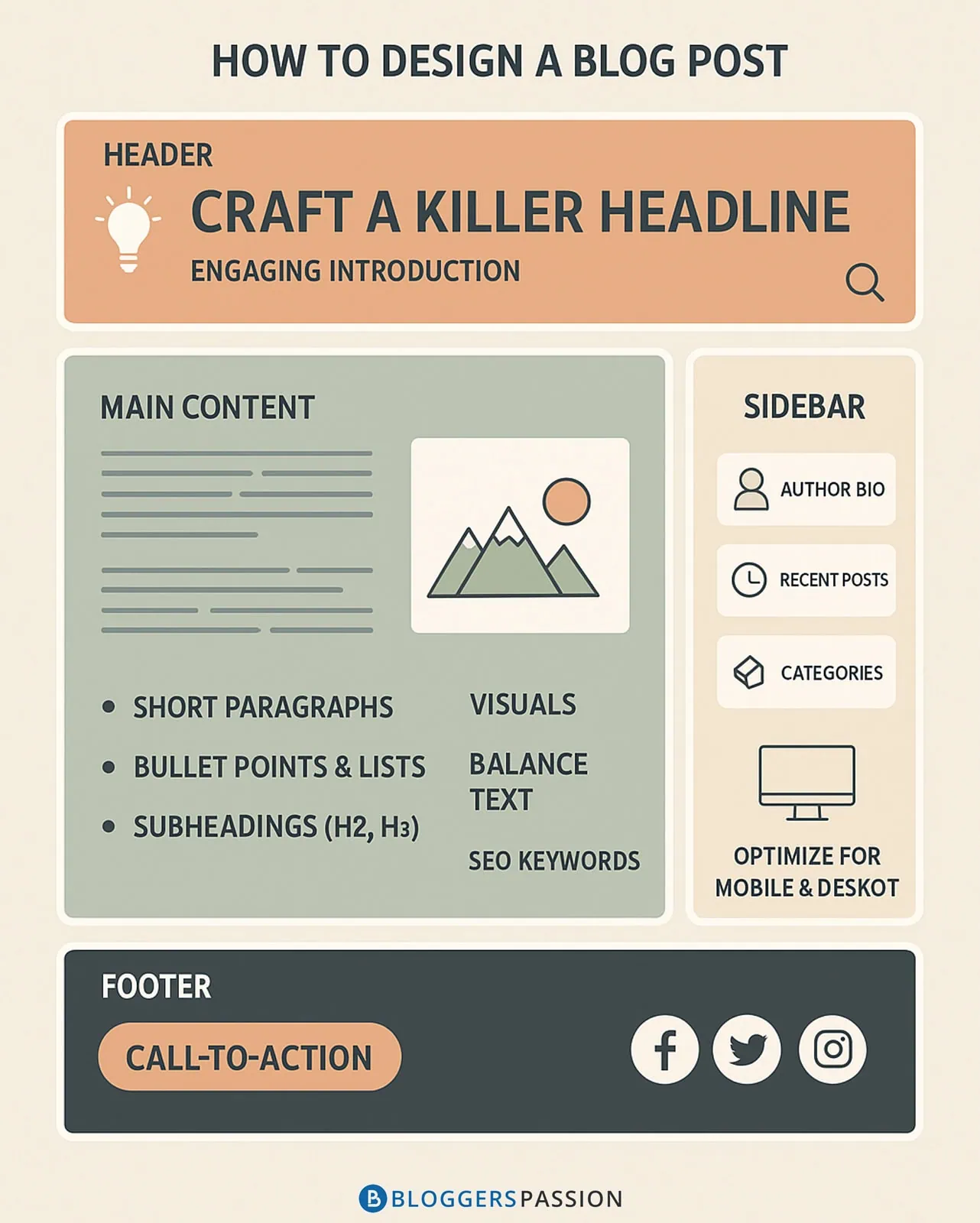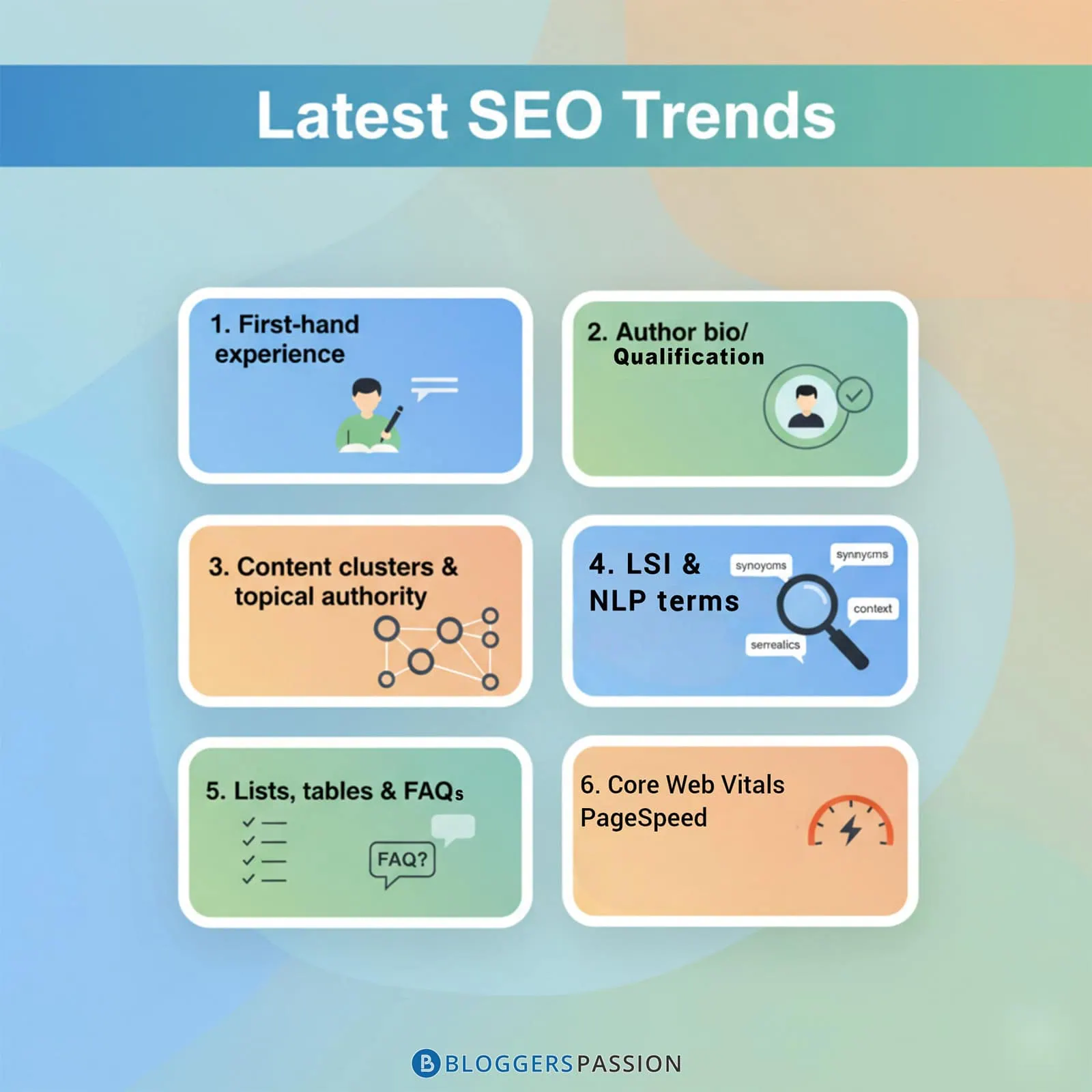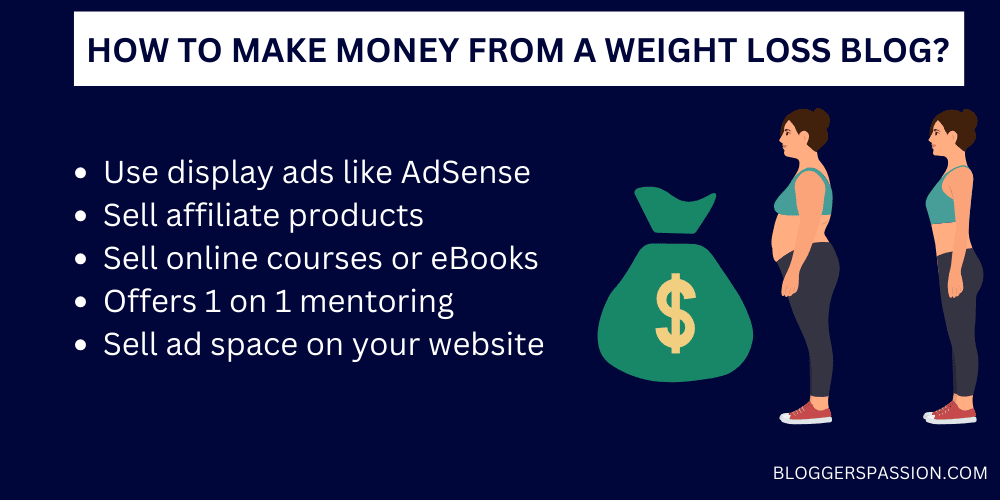Starting a weight loss blog is the best way to share your fitness transformation journey with people who want to achieve the same.
You don’t need to be a fitness guru or tech expert to provide weight loss blogging tips; however, you should have a passion to learn new things and inspire others.
You should understand that people are not looking for generic advice! They are expecting personalized tips that will really work for them.
If you are more interested in sharing weight loss tips, healthy recipes, and motivation online, I will tell you how to start a weight loss niche blog in 2026.
Let’s begin! Before getting into the topic, let me tell you the reasons for creating a weight loss
Table of Contents
Why Should You Start a Weight Loss Blog in 2026?

According to Global News Wire, the global weight loss market is set to double in size, rising from USD 260.7 billion in 2025 to a projected USD 532.5 billion by 2032.
As long as people are searching for advice on weight loss and a healthy lifestyle, there will be a huge demand for weight loss products and services.
Here’s why it’s worth starting a weight loss journey blog;
- It is a growing market globally, and weight loss is an evergreen niche
- Millions of people search online for weight loss tips daily, and hence, you can reach a large audience.
- There are many ways to monetize a blog that includes Ads, affiliate marketing, eBooks, or personalized coaching.
- It helps you develop an online presence and network with fitness enthusiasts worldwide.
- You can work from anywhere at your own convenience.
So, if you’re really passionate about fitness and enjoy blogging, starting a weight loss blog can be a great way to make money and help others.
How to Start a Weight Loss Blog in 8 Easy Steps?
Here’s a detailed step-by-step guide on how to start a weight loss niche blog and make it successful in 2026.
1. Narrow Down Your Weight Loss Niche
The easiest way to stand out in a crowded industry (such as weight loss) is to narrow your niche.
Pick something specific and narrow. Focus on a small audience instead of targeting a broad market.
You could target a specific group, like keto enthusiasts, new moms who want to shed pounds, or beginners who plan for their weight loss journey.
The key to niche selection is identifying your interests, skills, and expertise. Make sure there’s a demand for that topic.
Use Google Trends to see the growing popularity of the niche you pick. For example, if you are familiar with the vegan diet and many people are searching for vegan advice, that’s a great niche to consider.
Google Trends confirms the same.

As you can see, there’s increased popularity and searches for the search term “vegan,” so it’s a great weight loss niche to pick.
2. Choose Your Platform, Domain Name, and Hosting
When it comes to blogging platforms, WordPress.org is the best choice, and here are reasons to choose WordPress over other blogging platforms: ;
- It gives you full control to manage your blog
- You can access thousands of free plugins and themes
- Search engine friendly
- It has an excellent community where you can discuss anything.
- Plugins are available to maintain high-class blog security.
So, you need two things to build a weight loss blog from scratch: Domain name and Web hosting.
You have to pick a domain that is easy to remember. I would suggest you use either GoDaddy or Namecheap for the blog domain registration.
Use tools like Lean Domain Search to brainstorm weight loss blog domain name ideas.
Here’s an example;
As you can see, the tool generated over 7500 domain name ideas in the “weight loss” category.

Once domain selection is done, you need to pick a reliable web hosting server that is faster and affordable.
The hosting service should ensure your blog loads quickly and provide a secure experience for your visitors.
For web hosting, I highly recommend Hostinger. WordPress officially recommends it, and it is extremely affordable. Its stability will help you maintain trust and user engagement.
3. Design and Brand Your Blog
Your blog’s design matters a lot. To design your blog, you should get a WordPress theme. Free themes are available; however, I would suggest you get a premium theme.
Buy a mobile-friendly theme like GeneratePress, which is fast, responsive, customizable, and works well on all devices.
Design your blog in such a way that it matches your primary focus. For example, use calming colors like green or blue if your blog is about recipes and meal plans.
For a weight loss blog that discusses intermittent fasting, darker shades of blue or grey can convey a sense of seriousness and commitment.
Then, pick easy-to-read fonts that fit your blog’s niche. Use a simple and clean font for headings, with a simple one for body text.
Make sure to use a simple, memorable logo to make your blog’s design appealing. Use tools like Canva to create an appealing logo for your weight loss journey blog.

Try to use these interactive elements while designing your blog!
- Sticky Table of Contents (TOC)
- Comment Highlighting or Upvoting System
- Embedded Polls/Quizzes
- Customizable Interactive Widgets
- Clickable CTAs
- Interactive Video with Checkpoints
- Social Sharing Buttons with Share Counts
4. Create Essential Pages
Once your design and branding are done, create a few essential pages to stay authoritative and create transparency for your weight loss tricks blog.
- Homepage: Your blog’s home page is the first impression of your site. Include what your blog is all about and how it can help readers, and highlight recent blog posts and featured articles. Try to include testimonials for social proof.
- About page: Share your story. Discuss why you’ve started your blog. Mention your skills, expertise, etc.
- Contact page: Provide an easy way for visitors to reach you. Include a contact form, email, or social media links.
- Privacy Policy/Terms: Ensure legal compliance by detailing how you handle user data and outlining rules for site use. A free privacy policy tool can help you quickly create these pages.
5. Start Creating and Optimizing Content
Creating helpful content is the key to building a successful weight loss blog. Here are some of the effective strategies to create and optimize content for better search rankings.
First, you should know the requirements of your audience, and this can be done through keyword research.
Example – A Working woman who wants to lose weight up to 10 Kgs without going to the gym.
And, if you’re writing for weight loss beginners, focus on:
- Problems: Overweight, lack of motivation, confusion about diet and exercise.
- Answers: Meal plan routine, easy workouts, calorie tracking, motivational tips.
- Products: Fitness trackers, homemade diet plans, protein powders.
Connect with them emotionally by sharing your personal stories and answering their questions through your experience.
You may write different types of blog posts like how-to guides, lists, case studies, myths & truths and product reviews.
While creating content, spend quality time to boost your site’s overall E-E-A-T score.
- Expert Knowledge: Did someone who really knows about the topic write the page? Do they have proof of their knowledge, like degrees or experience?
- Authority: Is the person or website well-known and respected in the field? Are they considered experts in that subject?
- Trustworthiness: Can people trust the information on the page to be accurate and true? Does it come from a reliable source?
Ensure that you are crafting informative content for your audience. When you say “Sharing my weight loss journey”, it will be more effective and interesting for them to take action.
Optimize with SEO
Don’t publish the blog posts without doing keyword research. You should target reaching people through keywords.
Use the target keyword in the title, headings, and throughout the content without stuffing it forcefully.
Add internal links to other relevant posts and external links to trustworthy sources.
Include unique title tags and meta descriptions that are relevant to your topic.
Add images with descriptive file names and alt text. If you’re on WordPress, install a plugin like Rank Math for content optimization.
You should be aware of the latest SEO for a weight loss blog.
- Use first-hand experience; avoid keyword stuffing
- Tell that you are qualified to present the content; use the author bio
- Create content clusters; it is called topical authority
- Use LSI keywords and NLP terms
- Include lists, tables, and FAQs
- Pass core web vital assessments; use PageSpeed insights
- Update your blog posts every 8 – 12 months

6. Promote Your Blog
Getting traffic to your weight loss blog doesn’t have to be complicated.
You can reach more readers and grow your audience using the right promotion strategies. Here are a few practical blog promotion tips.
Use Social Media Effectively
The best thing about social media platforms is that you can quickly drive traffic (compared to SEO).
When it comes to promoting a blog, two platforms play a crucial role: Pinterest and Instagram. These two platforms are visual platforms that allow you to share inspiring images and videos related to weight loss and healthy living.
- For each blog post you publish, create eye-catching pins on Pinterest. Use engaging titles and descriptions for Pinterest SEO. Pin your pins to relevant boards and join group boards to reach more people.
- On Instagram, consistently create appealing visuals related to your weight loss blog. Try to share case studies or tips related to your content. Use hashtags. Tell stories, and make sure to include links in your bio.
- Utilize Facebook and LinkedIn groups to circulate helpful articles. Use hashtags to reach the intended readers. Also, make use of YouTube videos and shorts by repurposing the content.
Guest Blogging
Reach out to popular websites or blogs in the weight loss niche and contribute high-quality, valuable articles for their readers.
In your guest article, include a short author bio with a link back to your blog, or naturally mention a relevant blog post within the content if allowed.
It will help you reach their existing audience, build backlinks (which improve SEO), and grow your credibility.
Focus on providing real value, don’t self-promote!
Build an Email List
An email list helps you build a direct connection with your audience. Did you know that email marketing offers a remarkable return on investment (ROI) of 36:1?

It means businesses can expect to earn $36 in revenue for every dollar spent on email marketing.
So, how to build an email list? I have some ideas for you!
- Add a signup form on your blog
- Offer free gifts
- Use exit-intent popups
- Embed opt-in forms inside blog posts
- Run giveaways
- Promote your freebie on social media
- Use landing pages for promotion
- Collect emails through webinars or live sessions
- Add a CTA at the end of every blog post
With an active email list, you can send targeted newsletters, promote your recent blog posts, share real-life case studies, sell affiliate products, etc.
Offer free resources like eBooks, checklists, or guides to boost your email signups. For example, if your blog is about healthy recipes, create a free meal plan to share with your subscribers.
The key here is to send helpful emails regularly to keep your subscribers engaged.
7. Make Money from Your Weight Loss Blog
I have completed explaining how to start a weight loss journey blog.
Let’s now talk about the most interesting part: how to make money from a weight loss blog?
Create a monetization plan
Before you dive into weight loss blogging, it’s important for you to decide on what monetization strategy you’re going to implement.
You need two major things to make money from blogging.
- Website traffic (Drive traffic from search engines like Google)
- Converting that traffic into money
The biggest mistake most people make while monetizing their site is that they either don’t have a plan or they simply implement several monetization methods at once. Both are wrong.
The best way to come up with a monetization strategy is to look at your competitors’ websites and see in what ways they are making money from their audience.

Here are a few ways you can use it to make money blogging.
- Selling your own products, such as eBooks, cheat sheets, video tutorials, and so on
- Selling affiliate products in the weight loss industry
- Using ads such as AdSense, Chitika, and Media.net
- Becoming a fitness coach by helping others to get fit
Let’s talk about FOUR PROVEN ways to monetize your weight loss blog.
1. Promote affiliate products
Did you know that I made over $650,000 from ONE affiliate program? The key to successful affiliate marketing is website traffic.
The more website traffic you get towards your affiliate products that include your affiliate referral links, the more sales you will be able to generate and the more commission you will make from affiliate marketing.
Become an affiliate with ClickBank, Amazon, eBay, Impact, Awin, or Commission Junction (they are all free to sign up) to generate income with affiliate marketing.
Once you’re signed up with such platforms, you will get an affiliate referral link to promote the products.
Spend time to pick the products for promotion and write down unbiased and informative product reviews.
Here are a few quick tips for you if you want to increase affiliate sales in your industry.
- It’s better if you prefer an affiliate product that offers recurring commissions so you can earn commissions every month or year until the subscriber stops paying for the product, not just once.
- Focus only on promoting a limited number of affiliate products so that you can promote them effectively and make more commissions in the long run.
- Create product reviews, detailed tutorials, and video tutorials around the products you promote. Educating your audience about your niche products is the surest way to increase commissions.
2. Use display ads
Weight loss blogging has the biggest benefit. It has a huge CPC where you’ll most likely get traffic from countries like the US, UK, and Canada. The best thing about driving organic traffic with huge CPC is that you can use any type of monetization strategy to get more benefits.
Even with AdSense (where most of the industries have low CPC), you can still make thousands of dollars if you’re generating thousands of visitors from search engines to your site. You need to place the ads in the right spots to get more clicks.
3. Become a fitness coach
There are a lot of people who are looking for professional fitness advice. If you’ve good experience or are a certified fitness expert, you can become a fitness coach by showing your portfolio and start getting clients to earn money every month.
Here are a few tips to make coaching from your blog work for you;
- Write for your ideal clients instead of writing content for everyone. That way you’ll attract the right people who are keen to hire you for your mentorship.
- Share a ton of useful advice for free in the form of articles, eBooks, videos, and so on. If your followers feel like your advice is solid, they would gladly pay for you when you offer something premium, such as coaching services.
- Make sure to check out other fitness bloggers who are offering coaching services to get ideas. Find out how they are crafting their consulting services and how much they are charging to get an idea.
4. Sell your own products
If you don’t want to depend on others, sell your own products.
It might take some time, but selling your own products can give you a consistent income.
We’ve our own products in the store and we’re generating decent sales from the eBooks.
Here are some of the ways you can sell your own products to earn more money. It can be counted as a passive income source since you’re working hard in the beginning and the sales come later automatically if they are good.
Here are a few more ideas to make money with a weight loss blog!
Selling eBooks
Create and sell eBooks on specific topics like “Lose 5 Pounds in 30 Days” or “Quick Beginner’s Guide to Intermittent Fasting.” You can easily create eBooks and sell them directly from your blog.
Selling Cheat Sheets or Workbooks
Build some priceless printable resources like workout trackers, meal planners, weight management tips, or calorie-counting guides. These are low-cost digital products that offer quick value and are great for easy selling.
Weight Loss Recipes
Write some interesting weight-loss food ideas like healthy meal plans, snack ideas, or recipe books for low-carb diets and sell them as PDFs or mini-courses.
Membership Courses
Create structured programs with lessons, meal plans, and workout schedules. Members pay a monthly or a one-time fee to access the exclusive course material and community support.
Premium Content for an Exclusive Audience
Lock some of your best content, like experts’ tips, and downloadable tools. behind a paywall. Your readers have to pay for the content to be unlocked.
8. Stay Consistent and Analyze Growth
Consistency is key. Regular posting helps you build trust and encourages more people to visit your blog.
Search engines like Google always reward sites that publish fresh and vhelpful content.
Here are some of the most effective tips for consistency with your blog posting schedule.
- Create a content plan. Use an editorial calendar plugin or Google Spreadsheets to store your content ideas.
- Schedule your posts in advance. Content scheduling allows you to maintain consistency, write posts in advance, and ensure your audience receives valuable tips, workouts, and meal ideas regularly.
- Set realistic goals for maintaining consistency in blog posting, especially in the weight loss niche. Start by determining how often you can publish new content, such as once a week or twice a month.
- Break big and complex tasks into smaller, actionable steps, such as researching topics, creating outlines, and setting deadlines for each writing phase.
Monitor your website’s search traffic and keyword rankings. Use tools like Google Analytics and Google Search Console to track your blog performance and refine your strategies.
Do’s And Don’ts of Weight Loss Blogging
Do’s:
- Creating content by targeting a niche. It’s always better to blog around a specific topic (such as belly fat loss tips for women) instead of targeting a broad topic if you want to build a targeted audience quickly.
- Keep an eye on your competitors’ audience so you’ll know what to cater to and, more importantly, what to avoid.
- Always perform keyword research before you write even a word for your next blog post. That way, you can come up with fewer search volume keywords (preferably 1000 or below monthly searches) that you can target to rank for.
- Start a YouTube channel and tell everything you know about weight loss. If you’ve personally transformed yourself from fat to fit, it’s even better, as most people on YouTube would love to get advice from people who’ve actually made it.
Don’ts:
- Don’t create boring and generic content. There’s no point in creating thin content that’s not useful for anyone. If you really want to become a success in your niche, avoid creating generic and boring content. Focus on your target audience and create content that serves their needs.
- If you build it, they won’t come. If you create content and don’t care about the promotion part, no one is going to discover your blog. As a rule of thumb, spend at least 50% of your time doing promotion and 50% in content creation for the best results in the long run.
- Not creating an email list will be a huge mistake. Email marketing has a conversion rate 3 times higher than social media, with a 17% higher value in each conversion. So you can’t ignore the email list if you want to profit from fitness blogging.
Final Thoughts
It doesn’t matter what industry you are in, including weight loss, you can build a profitable blog in any niche by creating the right content, defining your target audience, and doing some in-depth competitor analysis.
Success is possible through consistency and the right strategy! I hope this guide gives a clear path to start and grow your weight loss site. Just focus on building an active blog that gets a targeted audience through several ways.
Have any questions? Let me know your thoughts in the comments. If you ever get stuck somewhere, I’m ready to help!
FAQs
Here are some of the frequently asked questions about weight loss blogging.
Pick a domain name, choose a reliable web hosting like Hostinger, grab a WordPress theme and you’re ready to go. In case you’re looking for a step-by-step guide, read my tutorial on how to start a blog.
The best way to come up with topic ideas is to do competitor analysis. Just find a list of 10 to 20 blogs in your industry to see what the popular posts are that you can cover by targeting decent search volume keywords. You can also use tools like Semrush for finding a ton of profitable topic ideas with ease.
Yes, there’s one called Semrush which can be used for competitor analysis, keyword research, site audits, content analysis, and so on. It is worth $100 per month, but it’s worth every single penny.
The U.S. weight loss market is estimated to be worth $295.3 billion by 2027, so obviously, you can proceed blogging for the weight loss niche.
Here are some of the ways to monetize a weight loss blog.
– Affiliate marketing
– Offering services like personal training
– Selling own products such as videos, eBooks, etc
– Using display ad networks such as AdSense



This is sooo good. Gonna start my weight loss blog. You are such an amazing help ❤️ I have a question. What’s the best platforms for a blog + store all in one? I want to blog, but also sell digital and physical products like ebooks, waist trainers, weight loss drinks etc
Ammah, You can go with the WordPress as a platform.